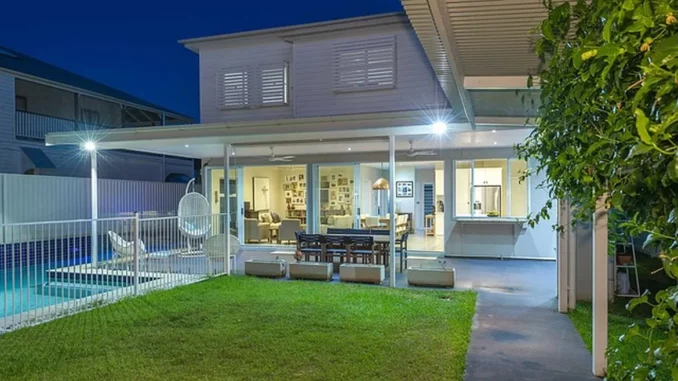
Creating a Stunning Garden: Expert Solutions to Common Design Challenges
Gardens hold the power to transform outdoor spaces into serene sanctuaries, but even the most experienced gardeners can encounter design challenges. Whether preparing your property for sale or cultivating a personal oasis, addressing common garden design issues is essential. Here, we delve into frequent problems and offer expert advice to elevate your garden’s beauty and functionality.
Timing and Seasonal Planting: Mastering the Art of Blooming
One of the pivotal questions in garden planning is, “When will my garden be showcased?” The timing of your garden’s peak can significantly influence its visual appeal. Each plant has its own seasonal rhythm, and understanding this can guide your decisions.
For example, if your property will be on the market in June, avoid deciduous trees that may not be at their prime. Instead, opt for evergreens that maintain their lushness year-round. Conversely, if selling in September, a Weeping Cherry can serve as a captivating focal point.
Consider the flowering cycles of your plants. A plant that looks breathtaking now may not be in bloom when your property is listed. Choosing plants with staggered flowering times or investing in perennials that bloom throughout the season ensures continuous visual interest.
Enhancing Wide and Shallow Gardens: Creating Depth and Interest
Gardens that are wider than they are deep can often seem flat and uninspiring. To counter this, layering elements within your garden can add depth and intrigue.
Begin with a low hedge, wall, or large-leafed shrub near the house to create a sense of enclosure. Introduce a focal point in the middle distance, such as a piece of furniture, statue, or water feature, to draw the eye and create depth. Using similar colours or shapes throughout the garden helps to unify the space.
Brightening Dark and Gloomy Gardens: Let There Be Light
Dark gardens, often shaded by overhanging trees or nearby buildings, can feel uninviting. Lighten the scene with paler paving or gravel to reflect light and brighten the area.
Incorporate plants with golden or variegated foliage that thrive in shade to add warmth. Vibrant colours on walls and furniture, such as orange, yellow, and hot pink, can enliven a gloomy garden. Outdoor mirrors and light-painted surfaces reflect light, creating a more open feel.
Transforming Narrow Side Passageways: From Neglect to Charm
Long, narrow side paths often become neglected. Enhance these areas with light-coloured concrete-based paver stepping stones set in pale gravel, which brightens the space and reduces slipping hazards.
Create a focal point at the end of the path with a statue or screen-style gate. Lush plantings of shade-loving plants like clivea, hardy ferns, and variegated liriope can complete the transformation, turning a dull passageway into a charming garden feature.
Navigating Steep, Rocky Gardens: Embracing Unique Opportunities
Gardening on a steep slope with rocky terrain presents challenges but also unique opportunities. Build up garden beds at the base of rocks to give height to lower plantings. Create spiralling steps through stone floaters to work with the landform.
Install small connected platforms or deck areas on level spaces, perhaps covered by a pavilion. Plants that thrive in limited soil, such as bromeliads, orchids, and succulents, add vibrant colour and texture. Incorporate pebbles, small statues, or niche plantings along stairs for pockets of interest.
Maximising Long, Narrow Gardens: Breaking Up the Space
Long, narrow gardens can feel more like a path than a garden. Use rectangular pavers set on an angle or a busier basketweave pattern in smaller pavers to create an impression of width.
Create separate garden rooms with lacy-foliaged shrubs or decorative screens on alternating sides. Different floor surfaces accentuate the changes, connected by an ‘S’ shaped path. A canopy from a small tree or pergola in the central section can create appealing sun and shade contrasts.
Harmonising Gardens Near Environmental Protection Zones: Blending In
If your garden backs onto an environmentally sensitive area, responsible gardening is crucial. Planting native cultivars creates a more ordered and colourful garden that blends with surrounding vegetation.
Formally clipped native plants near the house transition to more informal plantings near the boundary, blurring the line between garden and natural environment. Incorporate local stone and weathered timber for a naturalistic feel.
Revitalising Flat, Uninteresting Gardens: Adding Layers and Interest
Flat gardens can appear dull and struggle with drainage. Build up garden beds as informal mounds or with constructed raised beds and planters. Create layers of overlapping levels, including raised planters set at right angles or planting bands of shrubs that step up in height.
A deck away from the house, set about 30-40 cm off the ground, adds vertical interest. Alternatively, design a parterre, knot garden, or detailed paving pattern to feature the ground plane.
Creating a Garden View: Transforming Close-By Walls
If a prominent window faces a close-by wall or fence, create an instant garden with a planted window box. Use a self-watering planter trough secured with a railing.
Consider adding weatherproof art, a mosaic, or a photo mural to your wall. A thin metal or decorative screen set off the wall with a coloured backdrop and backlit at night can look dramatic. A vertical garden with hardy ferns or sun-loving succulents can be an excellent solution if space permits.
By addressing these common garden design problems with thoughtful solutions, you can transform your outdoor space into a beautiful and functional oasis. Whether preparing to sell your property or simply enhancing your garden’s enjoyment, expert advice and creative planning make all the difference.


Be the first to comment